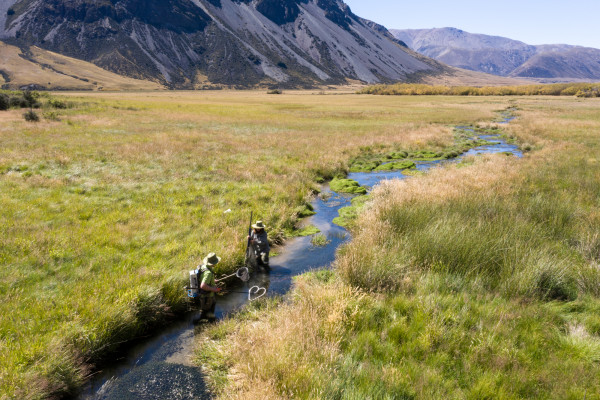Unique river project has "remarkable" results
By Jeff Page, Meridian’s Environmental Strategy Manager
High in the Southern Alps, water flows from our most majestic peaks into braided rivers that wind their way into the Waitaki Basin, supporting a rare and delicate ecosystem with numerous threatened species of fish, birds and lizards.

These rivers also underpin New Zealand’s clean energy economy and our ability to meet international climate change obligations.
The Waitaki Power System is New Zealand’s clean battery, storing and generating enough clean energy for more than 800,000 New Zealand homes and helping the country to cut greenhouse gas emissions and end its dependence on fossil fuels.
When the system was being carved from the landscape from the 1930s to the 1980s, the orthodox belief was that the environment had to come second to engineering.
As huge machines rolled over the land, people argued impassioned and opposing cases for ecology and economics that seemed destined for perpetual conflict.
But that changed in 1991 with a ground-breaking idea from an environmental scientist and a planner from the Department of Conservation (DOC).
The approach was completely new - to treat renewable energy generation and biodiversity as interconnected goals, accepting some impact on rivers while working to enhance biodiversity across the wider catchment at the landscape level.
This idea gave birth to Project River Recovery (PRR), an agreement between the electricity industry, government, iwi, farmers and environmentalists to manage the braided river system together.
Through the project, a hydropower generator had been given a significant stake in delivering conservation value - a healthy dose of Kiwi pragmatism and innovation that struck agreement between interests that previously hadn’t seen eye-to-eye.
The scope of PRR was bold from the outset, covering habitat and species management, intensive weed and predator control, wetlands construction, and research and monitoring programmes. At the time of its inception, the term ‘biodiversity’ was almost unheard of, and the project was recognised as being more ambitious than any other programme of its kind in New Zealand.
When Meridian Energy was formed following the restructuring of the national electricity network in 1999, it continued to fund PRR. This allowed the project to set its sights even higher, deploying new management techniques, engaging closely with local communities and developing new responses to biodiversity threats.
Over the following decades, the results achieved by PRR have been nothing short of remarkable.
Large parts of the braided river system are now free of invasive weeds.
The critically endangered Black stilt / Kakī continues to breed in the catchment due to predator management. Habitat is being expanded to protect the banded dotterel and other endangered birds – and New Zealand has retained its clean energy backbone as the urgency for meaningful climate action has grown.
Thirty years on from the launch of PRR, we recognise the urgency to act boldly on climate change has increased significantly. Maintaining the ability to generate renewable energy from the rivers of the Upper Waitaki Basin is critical to our transition to a low carbon economy and future.
PRR is proof this can be achieved in a way that also respects the biodiversity of the landscape, and the interests of all Kiwis that live, work and play in this iconic corner of the country.